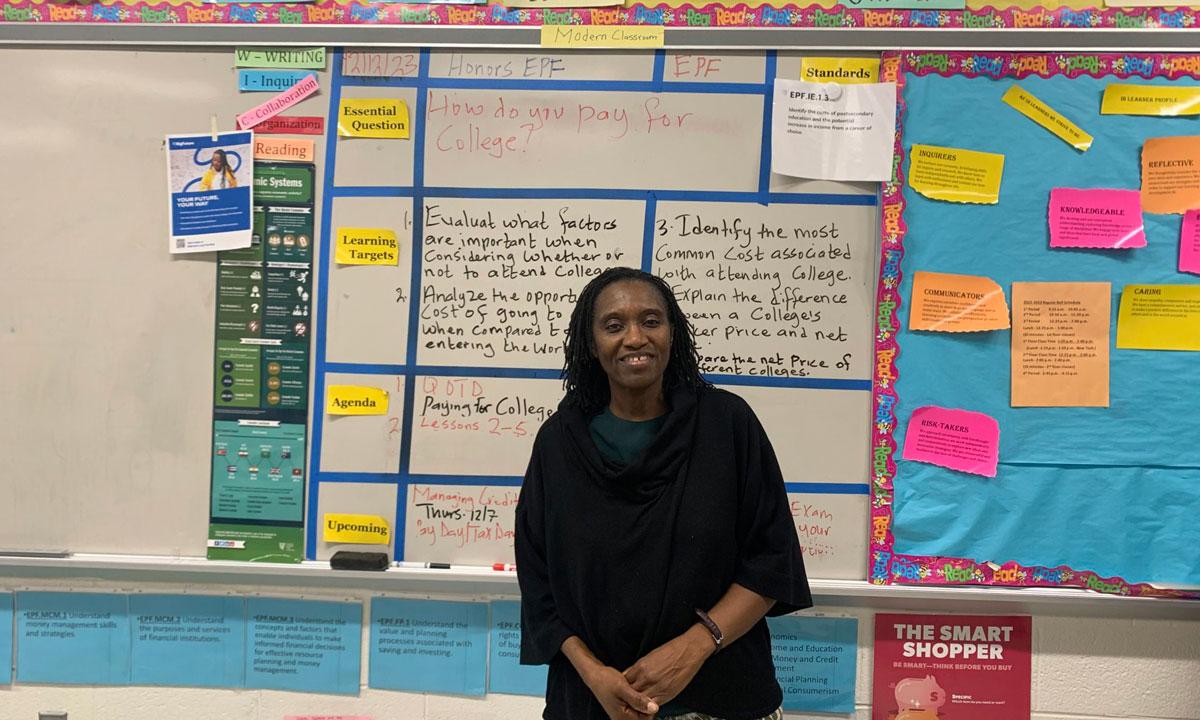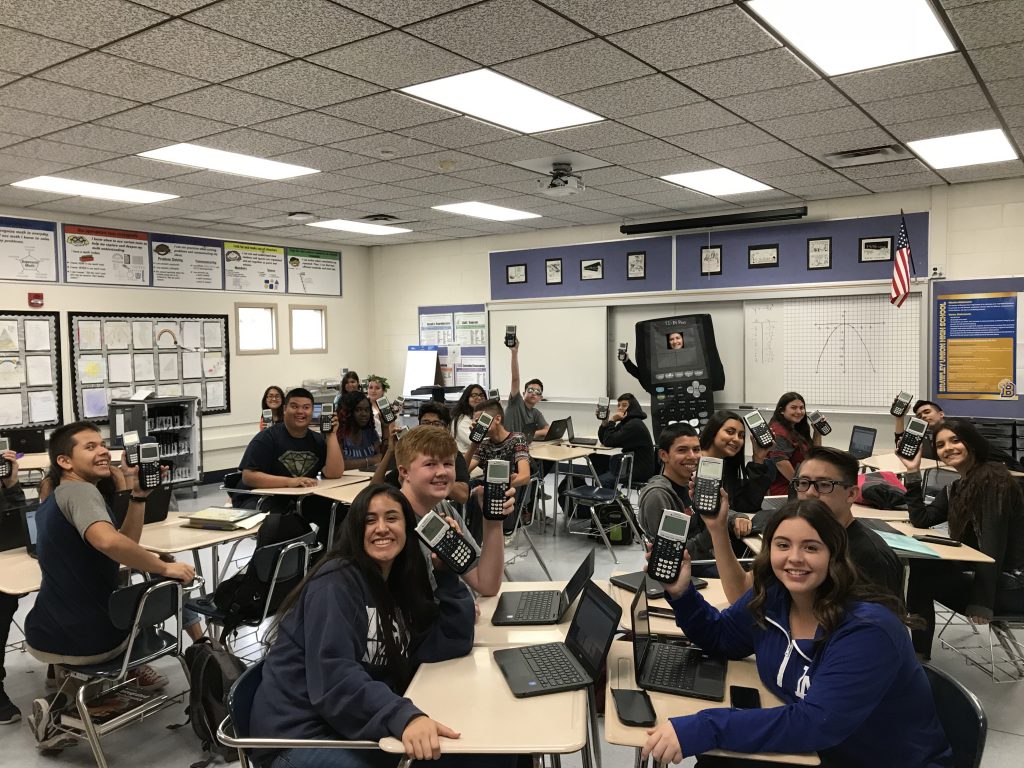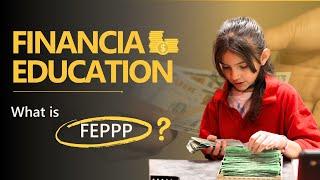In an era where financial decisions ripple through nearly every aspect of daily life, the call for financial literacy has never been louder. Recognizing this, the federal government is launching a concerted effort to weave financial education into the fabric of high school curricula across the nation. This initiative aims to equip young minds with the tools to navigate credit, budgeting, and investing long before they encounter real-world money challenges. As classrooms prepare to embrace this new frontier, the push for financial literacy classes signals a pivotal shift in how we prepare the next generation for economic empowerment and responsibility.
Table of Contents
- The Growing Importance of Financial Literacy in Today’s Economy
- Key Challenges in Implementing Financial Education in High Schools
- Innovative Curriculum Approaches for Engaging Young Learners
- The Role of Federal Funding and Policy Support in Expanding Access
- Practical Recommendations for Schools to Enhance Financial Literacy Programs
- Frequently Asked Questions
- Future Outlook
The Growing Importance of Financial Literacy in Today’s Economy
In an era where financial decisions have become increasingly complex, the ability to understand and manage money effectively is no longer a luxury but a necessity. From navigating student loans to deciphering credit card terms, young individuals face a myriad of financial challenges early in life. Recognizing this, policymakers and educators are advocating for comprehensive financial literacy programs within high school curricula to equip students with essential money management skills before they step into adulthood.
Financial literacy education aims to bridge the knowledge gap by teaching practical skills such as budgeting, saving, investing, and understanding credit. These lessons are designed to foster responsible financial behavior and empower students to make informed decisions, ultimately contributing to their long-term economic well-being. Schools adopting these programs are not only preparing students for personal success but also addressing broader societal issues related to debt, financial insecurity, and economic inequality.
Key components of effective financial literacy classes often include:
- Understanding the basics of income and expenses
- Credit scores and how they affect borrowing
- Emergency funds and the importance of saving
- Introduction to investing and retirement planning
- Recognizing and avoiding financial scams
| Financial Concept | High School Focus | Long-Term Benefit |
|---|---|---|
| Budgeting | Track income and expenses | Prevent overspending and debt |
| Credit Management | Understand credit reports | Improve loan approval chances |
| Saving | Set savings goals | Build financial security |
| Investing | Basics of stock market | Grow wealth over time |
Key Challenges in Implementing Financial Education in High Schools
Introducing comprehensive financial education in high schools is a commendable goal, but it comes with a variety of complex hurdles. One of the most pressing challenges is the lack of qualified instructors. Many educators have not received formal training in personal finance, making it difficult to deliver curriculum confidently and accurately. This gap often leads to inconsistent teaching quality and a diluted learning experience for students.
Additionally, the rigid structure of school schedules poses a significant barrier. Financial literacy must compete with core subjects for limited class time, and administrators are often hesitant to disrupt established timetables. This challenge is compounded by varied state standards and policies, which can result in a patchwork of financial education requirements that lack uniformity and coherence across districts.
Another obstacle lies in the content itself. Financial education covers a wide array of topics-from budgeting and saving to credit management and investing. Crafting a curriculum that is both comprehensive and age-appropriate requires ongoing revision and adaptation. Schools must also navigate the fine line between teaching practical skills and avoiding content that could be perceived as promoting specific financial products or ideologies.
- Teacher training and support must be prioritized to ensure effective delivery.
- Curriculum flexibility is essential to accommodate diverse student needs and local economic contexts.
- Funding constraints often limit the ability to implement robust programs.
| Challenge | Impact | Potential Solution |
|---|---|---|
| Teacher Expertise | Inconsistent instruction | Professional development programs |
| Curriculum Constraints | Limited coverage of topics | Modular and adaptable lesson plans |
| Policy Variability | Unequal access to education | Federal guidelines and incentives |

Innovative Curriculum Approaches for Engaging Young Learners
Engaging young learners in financial literacy requires more than traditional lectures and textbooks. Educators are now embracing interactive, hands-on activities that make abstract financial concepts tangible. From simulation games that mimic real-world banking to project-based learning where students create budgets for fictional scenarios, these methods spark curiosity and promote critical thinking.
One innovative approach gaining traction is the integration of technology, such as mobile apps and online platforms, that allow students to track expenses, set savings goals, and participate in virtual stock markets. This not only modernizes the curriculum but also aligns learning with students’ everyday digital experiences, fostering deeper engagement.
- Collaborative learning: Group projects that encourage peer-to-peer teaching and problem-solving.
- Storytelling: Relating financial lessons to personal or historical narratives to build emotional connections.
- Role-playing: Simulating real-life financial decisions to develop judgment and responsibility.
| Approach | Benefit | Example Activity |
|---|---|---|
| Gamification | Increases motivation | Budgeting challenges with rewards |
| Project-Based Learning | Enhances real-world skills | Creating personal financial plans |
| Technology Integration | Improves accessibility | Using finance apps for tracking |

The Role of Federal Funding and Policy Support in Expanding Access
Federal funding has become a cornerstone in the nationwide effort to embed financial literacy into high school curricula. By allocating targeted grants and resources, the government incentivizes schools to develop robust programs that equip students with essential money management skills. These funds often prioritize underserved communities, ensuring that economic barriers don’t limit access to quality financial education. Such support not only boosts the reach of these initiatives but also enhances their sustainability over time.
Policy support amplifies this impact by creating a framework that encourages states and school districts to adopt standardized financial literacy requirements. When policymakers mandate financial education as part of graduation criteria, it signals a commitment to preparing youth for real-world financial challenges. These policies often come paired with professional development opportunities for teachers, ensuring they are well-prepared to deliver engaging and effective lessons.
- Grants and subsidies aimed at curriculum development and educational technology
- State mandates integrating financial literacy into existing academic standards
- Teacher training programs to improve instructional quality
- Collaborations with nonprofit organizations to enrich learning materials and experiences
| Funding Type | Purpose | Impact |
|---|---|---|
| Federal Grants | Curriculum Development | Expanded program offerings |
| Policy Mandates | Statewide Implementation | Increased participation rates |
| Teacher Training | Professional Development | Improved lesson effectiveness |
Ultimately, the synergy between federal funding and policy initiatives creates a fertile environment for financial literacy to flourish in high schools. This comprehensive approach not only broadens access but also fosters a culture that values lifelong financial competence, empowering the next generation to make informed economic decisions.

Practical Recommendations for Schools to Enhance Financial Literacy Programs
To cultivate a generation that is financially savvy, schools must prioritize the integration of dynamic, real-world financial education into their curricula. This means moving beyond traditional textbook approaches and incorporating interactive tools such as budgeting simulations, investment games, and real-life case studies. By doing so, students gain hands-on experience that fosters a deeper understanding of managing personal finances effectively.
Collaboration with Financial Experts can significantly elevate the quality of programs offered. Schools should consider partnerships with local banks, credit unions, and financial advisors who can provide guest lectures, mentorship opportunities, and workshops tailored to address contemporary financial challenges. This direct exposure to professionals not only enriches learning but also demystifies finance as an accessible and essential life skill.
Equally important is the adoption of a comprehensive assessment framework to track students’ progress over time. Below is a sample framework that schools can adapt to measure their financial literacy initiatives effectively:
| Assessment Area | Evaluation Method | Frequency |
|---|---|---|
| Budgeting Skills | Practical assignments and quizzes | Quarterly |
| Credit and Debt Management | Case study analysis | Bi-annual |
| Investment Basics | Simulated portfolio projects | Annual |
| Financial Decision Making | Role-playing scenarios | Quarterly |
Finally, fostering an inclusive environment where students feel comfortable discussing money-related topics is crucial. Schools can create peer-led financial clubs or forums that encourage open dialogue, making financial literacy an engaging, ongoing conversation rather than a once-a-year lesson. Together, these strategies build a foundation for lifelong financial competence.
Frequently Asked Questions
Q&A: Federal Push for Financial Literacy Classes in High Schools
Q1: What is the new federal initiative regarding financial literacy in high schools?
A1: The federal government is advocating for mandatory financial literacy classes in high school curricula nationwide. This initiative aims to equip students with essential money management skills before they graduate.
Q2: Why is financial literacy being emphasized now?
A2: With rising student debt, credit card misuse, and economic challenges, financial literacy is seen as a crucial life skill. The push reflects a growing recognition that early education can foster responsible financial behavior and long-term economic stability.
Q3: What topics will these financial literacy classes cover?
A3: Core topics typically include budgeting, saving, credit management, investing basics, understanding loans and interest rates, taxes, and retirement planning. The goal is to provide a comprehensive foundation for personal finance.
Q4: How will the federal government support schools in implementing these classes?
A4: The government plans to offer funding, resources, and standardized curriculum guidelines to help schools integrate financial literacy into their existing programs. Partnerships with financial experts and organizations are also encouraged.
Q5: Are there any concerns or criticisms about this federal push?
A5: Some critics worry about the one-size-fits-all approach and the potential burden on already stretched school schedules. Others question whether mandated classes can truly engage students or if financial literacy should be tailored to diverse community needs.
Q6: How might this initiative impact students’ futures?
A6: Ideally, students will graduate with a stronger understanding of managing money, reducing debt, and making informed financial decisions-skills that can lead to greater personal and economic well-being over a lifetime.
Q7: When can schools expect these financial literacy classes to start?
A7: Implementation timelines vary by state and district, but many schools aim to introduce these courses within the next few academic years, pending federal funding and local approval.
Q8: How can parents and communities get involved?
A8: Parents and community members can support the initiative by advocating for financial literacy in local school boards, volunteering as guest speakers, or providing resources to reinforce lessons at home.
This Q&A captures the essence of the federal push for financial literacy in high schools, providing clear, balanced information for readers curious about this educational development.
Future Outlook
As the federal government champions the cause of financial literacy in high schools, a new chapter begins in equipping young minds with the tools to navigate an increasingly complex economic landscape. This initiative doesn’t just promise smarter spending and saving-it offers a roadmap to lifelong financial confidence. While challenges remain in implementation and engagement, the seeds planted today could very well grow into a generation that understands money not as a mystery, but as a manageable resource. In the end, this push for education may be less about dollars and cents, and more about empowering futures.

